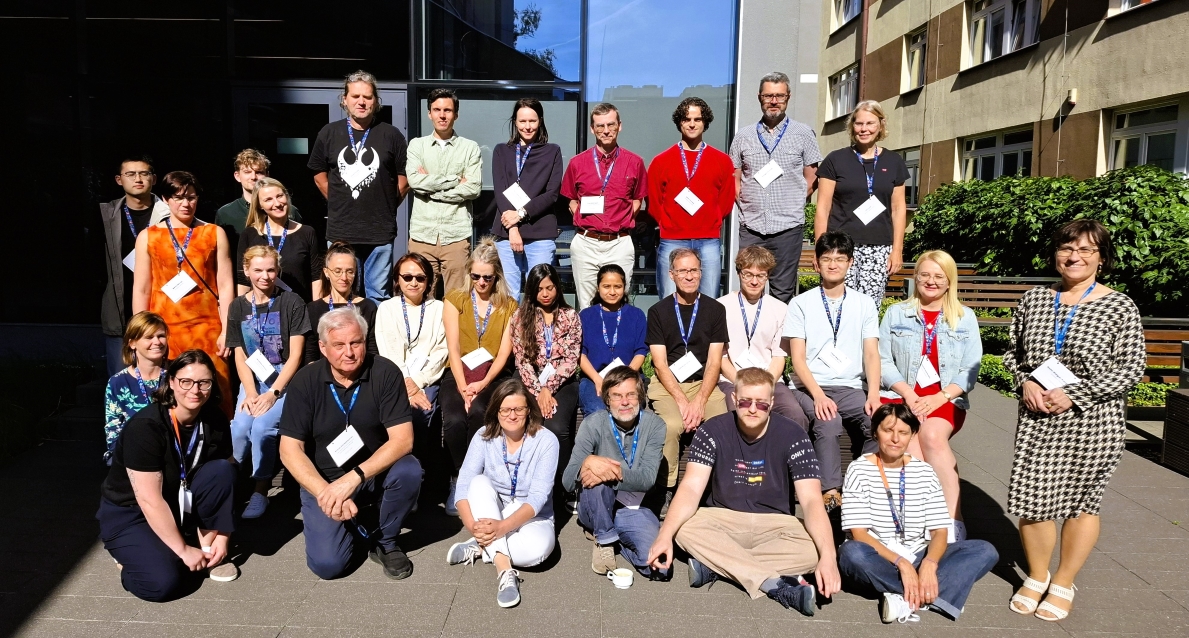Workshop on biophysical methods with experts from the US
Theory, advanced data analysis and the selection of optimal experimental strategies at the world's highest level - in other words, everything that matters most in a scientist's work - were the subject of a workshop on advanced biophysical techniques.
The event, jointly organized by the International Institute of Molecular and Cell Biology in Warsaw (IIMCB) and the Faculty of Physics at the University of Warsaw, brought together participants from Poland and Belgium, China, Czechia, Finland, France, Germany, Singapore and the United Kingdom. The workshop's lecturers were traditionally scientists from the US National Institutes of Health (NIH) and the University of Texas Medical Center: Chad Brautigam, Rodolfo Ghirlando, Grzegorz Piszczek, Peter Schuck, and Huaying Zhao.
Workshop participants had the opportunity to gain not only theoretical knowledge, but also practically, at the computer, practice the skills of analyzing advanced biophysical experiments used to study the interactions of proteins and other biological macromolecules.
- The workshop was very universal in nature, attended by scientists with many years of experience, experts in their field, as well as those who are just beginning their scientific journey in biophysics, says Roman Szczepanowski of the Biophysics and Bioanalytics Facility at IIMCB. Our lecturers are distinguished scientists with many years of experience and tremendous achievements (e.g. 26,000 citations or a Hirsch index of more than 80 otherwise), but just as importantly, developers and advanced users of specialized software for biophysical data analysis. This gave participants the opportunity to learn about the most effective research methods and data analysis procedures first-hand, as it were. Lectures and exercises focused mainly on methods such as analytical ultracentrifugation (AUC), isothermal titration calorimetry (ITC), surface plasmon resonance (SPR), mass photometry (MP) and the latest software for their analysis, including SEDFIT and SEDPHAT, NITPIC or GUSSI. However, participants had the option of choosing additional lectures and individual exercises covering other methods they use.
As experts point out, the biophysical techniques discussed, such as AUC, for example, are so versatile that they can be used not only in biological research, but also in nanotechnology or analysis of new materials. For example, AUC allows the analysis of molecules of various sizes, from peptides (0.1 Da) to viruses (200 MDa), as well as nanoparticles or colloids. The importance of these methods is best demonstrated by the fact that many of these techniques such as AUC, ITC and SPR are recommended by the U.S. FDA for use in preclinical studies, making them crucial to the development of new drugs. This opens up new opportunities in diagnostics and therapeutics.
The Warsaw workshop mostly mirrored the program held annually at the National Institutes of Health (NIH) in Bethesda (Maryland, USA), but was enriched with additional elements, adapting it to the needs of the Polish scientific community. In accordance with their suggestion, the agenda has been expanded, with methods to be introduced soon at the IIMCB.
- We are pleased that NIH scientists found the workshop in Warsaw to be valuable and decided to repeat it, after the success of the first 2016 edition organized at the IIMCB,” Roman Szczepanowski concludes.
About the NIH workshops
The National Institute of Biomedical Imaging and Bioengineering is a world-class American research institution, part of the National Institutes of Health (NIH) network under the auspices of the US Department of Health and Human Services.
Workshops on biophysical techniques organized by the Institute are held twice a year. The first in May in Bethesda (Maryland, USA) and the second in the fall at selected foreign sites. These are places of recognized scientific status, including from France (Institut de Biologie Structurale, Grenoble), the UK (University College, London), Switzerland (École Polytechnique Fédérale de Lausanne), Japan (Yokohama City University) or Sweden (Uppsala Universitet). The International Institute of Molecular and Cellular Biology in Warsaw co-hosted the workshop for the second time. The first Warsaw edition took place in 2016.
This year's workshop was held September 23-27 in the grounds of the Faculty of Physics of the University of Warsaw.


